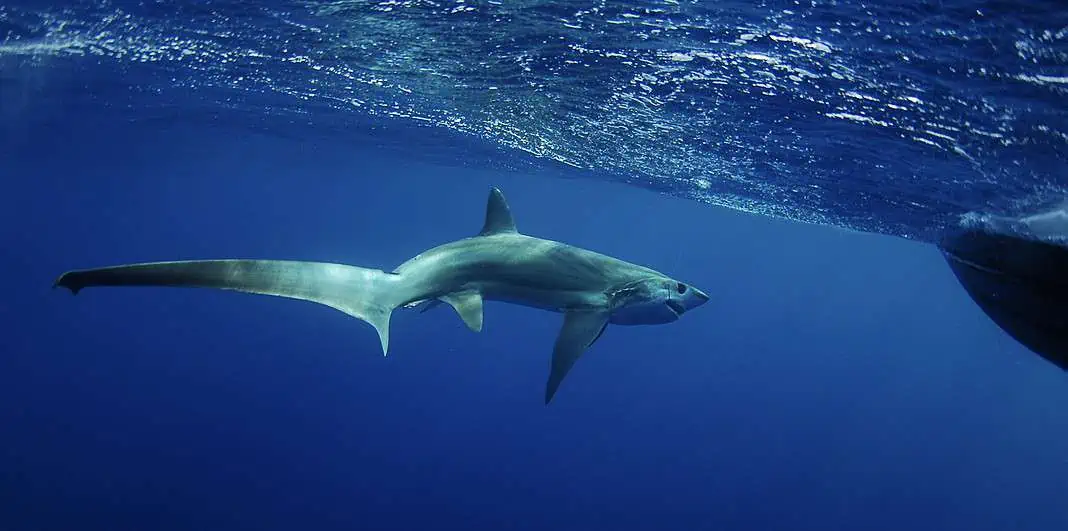A new study has shown the mechanics behind the machete-like tail movements of thresher sharks.
The study looked into how the sharks use the whipping action of their tails to stun prey before consuming them.
The researchers used micro-CT scans to look at the vertebrae from ten common thresher sharks that ranged in size from fully grown to an embryo. According to the research, the thresher tail whipping motion can be broken down into four phases:
- Preparation.
- Strike.
- Wind down and recovery.
- Prey collection.
The study comes from the Florida Atlantic University in collaboration with the Northeast Fisheries Science Center, the Apex Predators Program and the National Oceanic and Atmospheric Administration (NOAA).
According to Jamie Knaub, the study’s first author and doctoral graduate student in FAU’s Department of Biological Sciences within the Charles E. Schmidt College of Science:
“We found that anatomy and microstructure significantly varied along the body and among developmental groups – embryonic, juvenile and adult common thresher sharks. Based on our results, we believe that thresher shark vertebrae vary in anatomy, and the amount and arrangement of mineral, supporting the mechanical needs for tail-whipping.”
While Marianne Porter, the study’s senior author and associate professor at FAU’s Department of Biological Sciences, added:
“We think that anterior body vertebrae stabilize the thresher shark’s main body, while vertebrae closer to the tail support overhead tail-whips. Additionally, developmental changes suggest that vertebral anatomy shifts across development to support a larger body and caudal fin.”
You can find the original research here, or check out a video of the study’s findings below.

